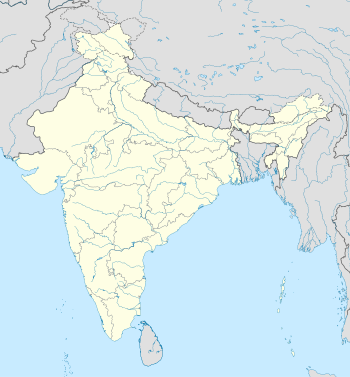| Operation Chengiz Khan | |||||||
|---|---|---|---|---|---|---|---|
| Part of the Indo-Pakistani War of 1971 | |||||||
| |||||||
| Belligerents | |||||||
| Commanders and leaders | |||||||
|
|
| ||||||
| Strength | |||||||
|
SAM missiles |
15 aircraft in a third wave | ||||||
| Casualties and losses | |||||||
| No material damage to most of the IAF airfields, with only the runways at Amritsar getting cratered and a radar station destroyed.[4] Most airfields repaired within same night.[5] | 4 aircraft reportedly shot down in response.[4] | ||||||
Operation Chengiz Khan was the code name assigned to the preemptive strikes carried out by the Pakistani Air Force (PAF) on the forward airbases and radar installations of the Indian Air Force (IAF) on the evening of 3 December 1971, and marked the formal initiation of hostilities of the Indo-Pakistani War of 1971. The operation targeted 11 of India's airfields and also included artillery strikes on Indian positions in Kashmir. The targets were the Indian Airbases of Amritsar, Ambala, Agra, Awantipur, Bikaner, Halwara, Jodhpur, Jaisalmer, Pathankot, Bhuj, Srinagar and Uttarlai and air defence radars at Amritsar and Faridkot.
Not withstanding the multiplicity of targets, the Pakistani air strikes were ineffectual and failed to inflict any material damage to the IAF air fields, only cratering the runways at Amritsar and destroying a radar station.[4][6] The PAF reportedly lost four aircraft during the raid.[4]
In an address to the nation on radio that same evening, then Indian Prime Minister Indira Gandhi held the air strikes to be a declaration of war against India and the Indian Air Force responded with initial air strikes the same night, which were expanded to massive retaliatory air strikes the next morning. Statements released by both nations the next day confirmed the "existence of a state of war between the two countries", although neither government formally issued a declaration of war.
- ^ Hiro, Dilip (2012). Apocalyptic Realm: Jihadists in South Asia. Yale University Press. p. 143. ISBN 978-0300173789.
- ^ Ganguly, Sumit (April 2002). Conflict Unending: India-Pakistan Tensions Since 1947. Columbia University Press. p. 67. ISBN 9780231507400.
- ^ Riedel, Bruce O. (2012). Deadly Embrace: Pakistan, America, and the Future of the Global Jihad. Brookings Institution. p. 10. ISBN 978-0815722748.
- ^ a b c d Nordeen, Lon O. (1985). Air warfare in the missile age. Internet Archive. Washington, D.C. : Smithsonian Institution Press. p. 96. ISBN 978-0-87474-680-8.
- ^ Cite error: The named reference
lalwas invoked but never defined (see the help page). - ^ Batabyal, Guru Saday. (20 December 2020). Politico-Military Strategy of the Bangladesh Liberation War, 1971 (illustrated ed.). Taylor & Francis. p. 17. ISBN 9781000317664.
